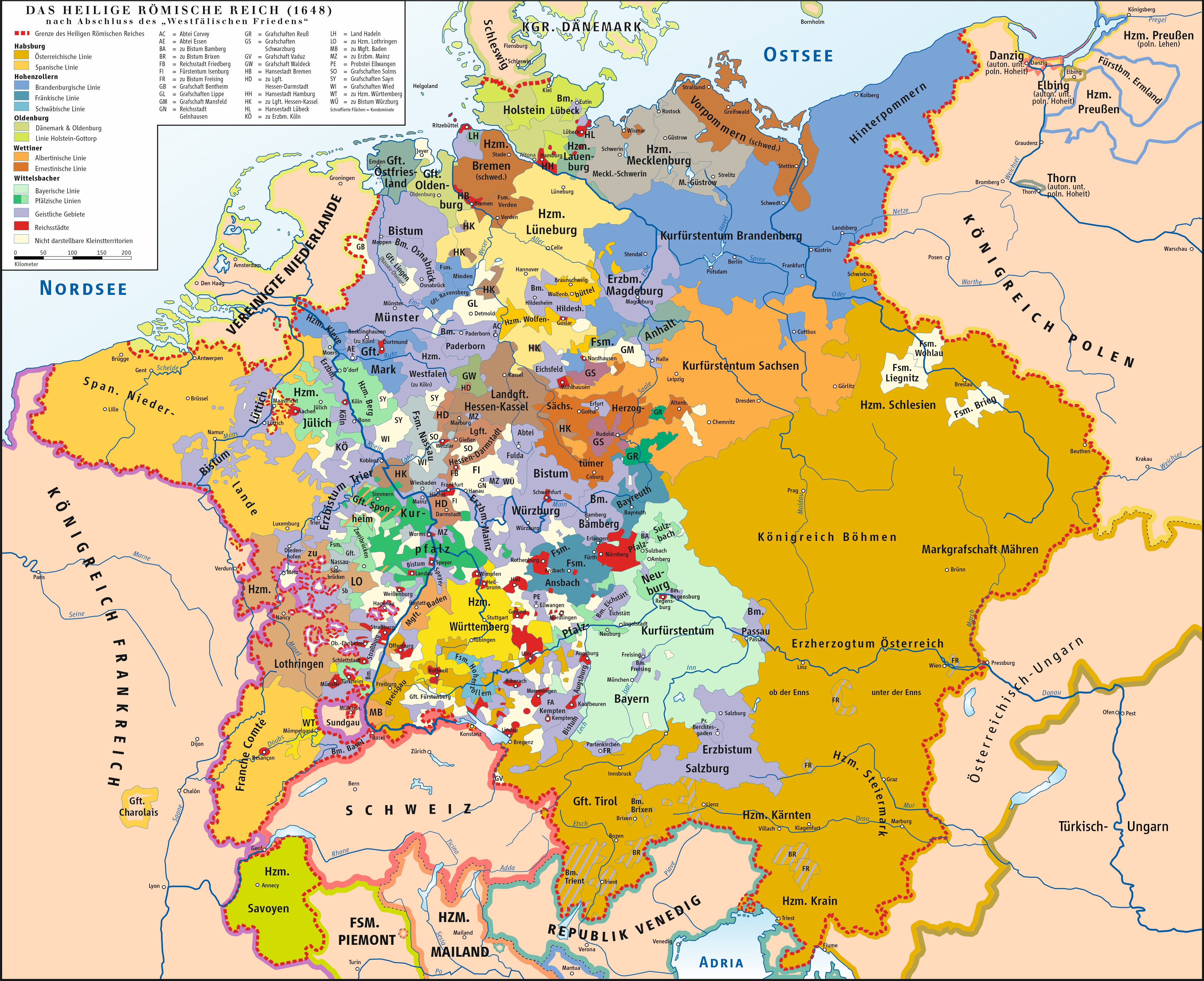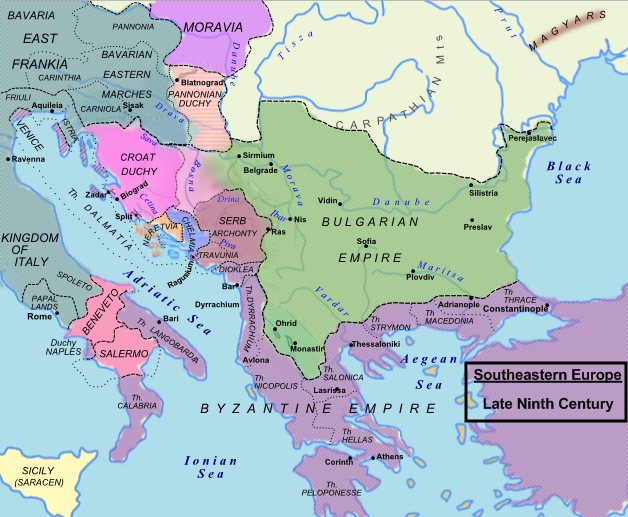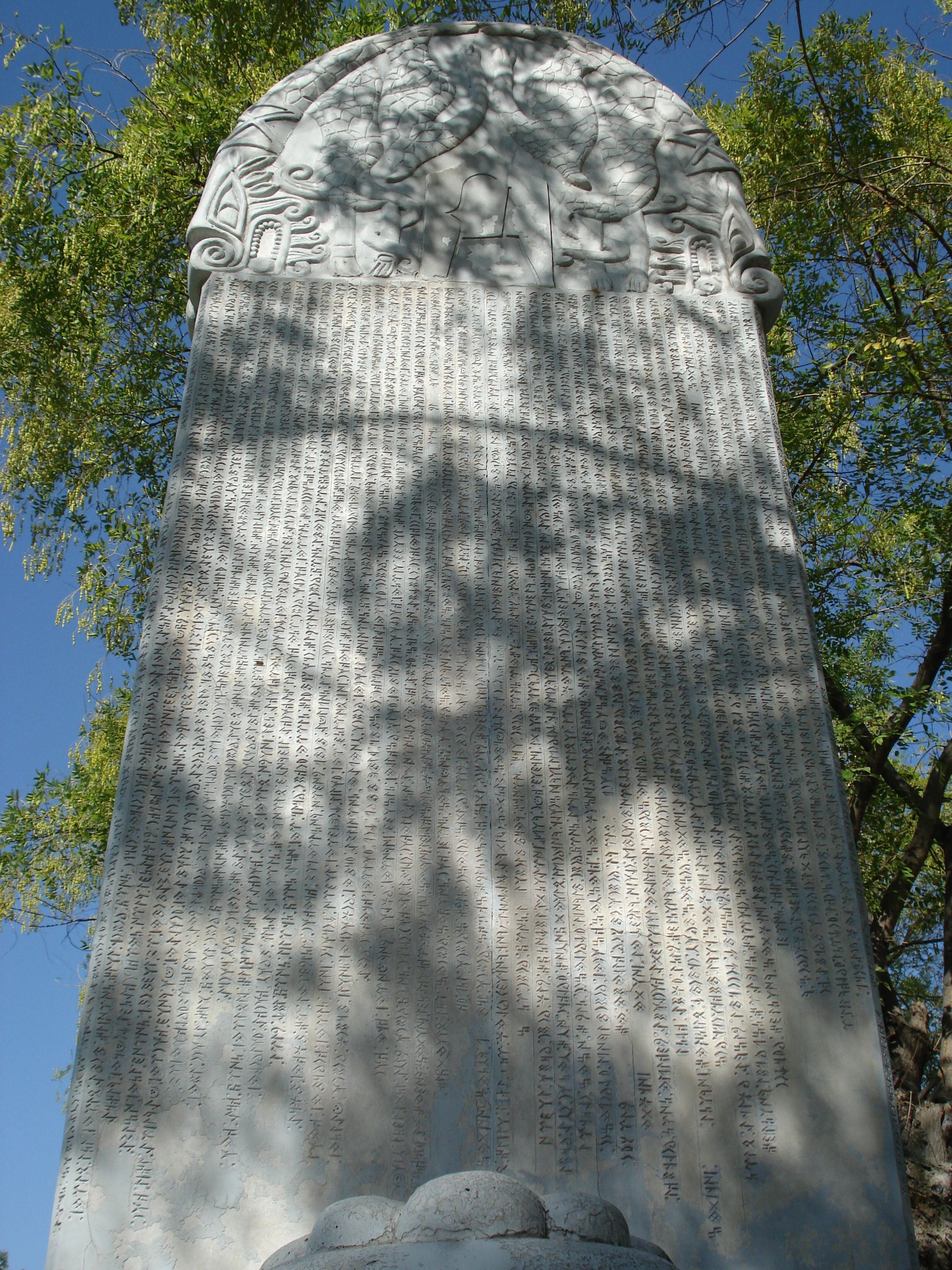|
Siret, Suceava County
Siret (; ; ; ; ) is a town, municipality and former Latin bishopric in Suceava County, northeastern Romania. It is situated in the historical region of Bukovina. Siret is the 11th largest urban settlement in the county, with a population of 6,708 inhabitants, according to the 2021 census. It is one of the oldest towns in Romania and was the capital of the medieval Principality of Moldavia during the late 14th century. Furthermore, the town administers two villages: Mănăstioara and Pădureni. Administration and local politics Town council The town's current local council has the following political composition, according to the results of the 2020 local elections: Geography The town of Siret is located at the north-eastern limit of Suceava County, from the border with Ukraine. It is one of the main border crossing points in the north of Romania, having both a road border post and a rail connection. Vicșani railway station is west of Siret and functions as the bord ... [...More Info...] [...Related Items...] OR: [Wikipedia] [Google] [Baidu] |
Suceava County
Suceava County () is a county (') of Romania. Most of its territory lies in the southern part of the Historical regions of Romania, historical region of Bukovina, while the remainder forms part of Western Moldavia proper. The county seat and the most populous urban settlement of the county is Suceava. Demographics In 2011, as per the 2011 Romanian census, official census conducted that year, Suceava County had a population of 634,810, with a population density of 74/km2. The proportion of each constituent ethnic group is displayed below as follows, according to how they were officially recorded: * Romanians – 96.14% * Romani people in Romania, Romani – 1.92% * Ukrainians of Romania, Ukrainians (including Hutsuls and Rusyns) – 0.92% * Lipovans – 0.27% * Germans of Romania, Germans (namely Bukovina Germans, Zipser Germans/Saxons, and Regat Germans) – 0.11% * West Slavs (i.e. Poles in Romania, Poles, Slovaks of Romania, Slovaks, and Czechs of Romania, Czechs) as well ... [...More Info...] [...Related Items...] OR: [Wikipedia] [Google] [Baidu] |
Suceava
Suceava () is a Municipiu, city in northeastern Romania. The seat of Suceava County, it is situated in the Historical regions of Romania, historical regions of Bukovina and Western Moldavia, Moldavia, northeastern Romania. It is the largest urban settlement of Suceava County, with a population of 84,308 inhabitants according to the 2021 Romanian census. During the Late Middle Ages, late Middle Ages, namely between 1388 and 1564 (or from the late 14th century to the late 16th century), this middle-sized town was the capital of the Moldavia, Principality of Moldavia. Later on, it became an important, strategically located commercial town of the Habsburg monarchy, Austrian Empire, and Austria-Hungary (formerly belonging to Cisleithania or the Austrian part of the dual monarchy) on the border with the Romanian Old Kingdom. Nowadays, the town is known for its reconstructed Medieval Seat Fortress of Suceava, medieval seat fortress (further rebuilt through the European Union, EU-funded ... [...More Info...] [...Related Items...] OR: [Wikipedia] [Google] [Baidu] |
Ukrainska Shkola
Ukrainian (, ) is an East Slavic language, spoken primarily in Ukraine. It is the first (native) language of a large majority of Ukrainians. Written Ukrainian uses the Ukrainian alphabet, a variant of the Cyrillic script. The standard language is studied by the National Academy of Sciences of Ukraine and Potebnia Institute of Linguistics. Comparisons are often made between Ukrainian and Russian, another East Slavic language, yet there is more mutual intelligibility with Belarusian,Alexander M. Schenker. 1993. "Proto-Slavonic", ''The Slavonic Languages''. (Routledge). pp. 60–121. p. 60: " hedistinction between dialect and language being blurred, there can be no unanimity on this issue in all instances..."C.F. Voegelin and F.M. Voegelin. 1977. ''Classification and Index of the World's Languages'' (Elsevier). p. 311, "In terms of immediate mutual intelligibility, the East Slavic zone is a single language."Bernard Comrie. 1981. ''The Languages of the Soviet Union'' (Ca ... [...More Info...] [...Related Items...] OR: [Wikipedia] [Google] [Baidu] |
Ruska Besida In Bukovina
Ruska may refer to: Places Slovak villages *Ruská *Ruská Bystrá *Ruská Kajňa *Ruská Poruba *Ruská Voľa *Ruská Volová *Ruská Nová Ves Other *Rava-Ruska, a city in Ukraine *Ruska Bela, a city in Bulgaria *Ruska, a village in Seliatyn, Chernivtsi Oblast, Ukraine Other uses * Ruska (surname) * Ruska (grape), another name for the wine grape Gewürztraminer * Pogoń Ruska coat of arms * A song by the Finnish band Apocalyptica Apocalyptica is a Finnish symphonic metal band from Helsinki, formed in 1993. The band is currently composed of three classically trained cellists Eicca Toppinen, Paavo Lötjönen, and Perttu Kivilaakso. Originally a Classical music, classical- ... * Ruska (car), a Dutch manufacturer of automobile {{disambiguation, geo ... [...More Info...] [...Related Items...] OR: [Wikipedia] [Google] [Baidu] |
Austria-Hungary
Austria-Hungary, also referred to as the Austro-Hungarian Empire, the Dual Monarchy or the Habsburg Monarchy, was a multi-national constitutional monarchy in Central Europe#Before World War I, Central Europe between 1867 and 1918. A military and diplomatic alliance, it consisted of two sovereign states with a single monarch who was titled both the Emperor of Austria and the King of Hungary. Austria-Hungary constituted the last phase in the constitutional evolution of the Habsburg monarchy: it was formed with the Austro-Hungarian Compromise of 1867 in the aftermath of the Austro-Prussian War, following wars of independence by Hungary in opposition to Habsburg rule. It was dissolved shortly after Dissolution of Austria-Hungary#Dissolution, Hungary terminated the union with Austria in 1918 at the end of World War 1. One of Europe's major powers, Austria-Hungary was geographically the second-largest country in Europe (after Russian Empire, Russia) and the third-most populous (afte ... [...More Info...] [...Related Items...] OR: [Wikipedia] [Google] [Baidu] |
Habsburg Monarchy
The Habsburg monarchy, also known as Habsburg Empire, or Habsburg Realm (), was the collection of empires, kingdoms, duchies, counties and other polities (composite monarchy) that were ruled by the House of Habsburg. From the 18th century it is also referred to as the Austrian monarchy, the Austrian Empire () or the Danubian monarchy. The history of the Habsburg monarchy can be traced back to the election of Rudolf I of Germany, Rudolf I as King of the Romans, King of Germany in 1273 and his acquisition of the Duchy of Austria for the Habsburgs in 1282. In 1482, Maximilian I, Holy Roman Emperor, Maximilian I acquired the Habsburg Netherlands, Netherlands through marriage. Both realms passed to his grandson and successor, Charles V, Holy Roman Emperor, Charles V, who also inherited the Monarchy of Spain, Spanish throne and Spanish Empire, its colonial possessions, and thus came to rule the Habsburg empire at its greatest territorial extent. The abdication of Charles V in 1556 led ... [...More Info...] [...Related Items...] OR: [Wikipedia] [Google] [Baidu] |
Cholera
Cholera () is an infection of the small intestine by some Strain (biology), strains of the Bacteria, bacterium ''Vibrio cholerae''. Symptoms may range from none, to mild, to severe. The classic symptom is large amounts of watery diarrhea lasting a few days. Vomiting and muscle cramps may also occur. Diarrhea can be so severe that it leads within hours to severe dehydration and electrolyte imbalance. This can in turn result in Enophthalmia, sunken eyes, cold or cyanotic skin, decreased skin elasticity, wrinkling of the hands and feet, and, in severe cases, death. Symptoms start two hours to five days after exposure. Cholera is caused by a number of Serotype, types of ''Vibrio cholerae'', with some types producing more severe disease than others. It is spread mostly by Waterborne diseases, unsafe water and Foodborne illness, unsafe food that has been contaminated with human feces containing the bacteria. Undercooked shellfish is a common source. Humans are the only known host fo ... [...More Info...] [...Related Items...] OR: [Wikipedia] [Google] [Baidu] |
Imperial Russian Army
The Imperial Russian Army () was the army of the Russian Empire, active from 1721 until the Russian Revolution of 1917. It was organized into a standing army and a state militia. The standing army consisted of Regular army, regular troops and two forces that served on separate regulations: the Cossacks, Cossack troops and the Islam in Russia, Muslim troops. A regular Russian army existed after the end of the Great Northern War in 1721.День Сухопутных войск России. Досье [''Day of the Ground Forces of Russia. Dossier''] (in Russian). TASS. 31 August 2015. During his reign, Peter the Great accelerated the modernization of Russia's armed forces, including with a decree in 1699 that created the basis for recruiting soldiers, military regulations for the organization of the a ... [...More Info...] [...Related Items...] OR: [Wikipedia] [Google] [Baidu] |
List Of Russian Cities, Near And Far
The ''List of Russian cities, far and near'' is a commonly accepted tentative title for the 14th–15th century appendix found in several manuscripts, including the Commission Scroll of the ''Novgorod First Chronicle'' (1440s), , and , usually prefaced with the phrase «» ("And these are the names of all Russian cities, far and near"). It is the earliest known historical work covering the settlements of the East Slavic people, and is thus given much historical significance. While the original protograph has not been preserved, the earliest known edition is written in the Novgorod First Chronicle from the 15th century, and was later rediscovered by Russian-German historian Gerhard Friedrich Müller in the early 1760s. Origin The original date of the list's production is unknown, but based on certain features of the text it can be determined to have originated from the late 14th to early 15th century. Among the list of Rus' cities, some Bulgarian cities are shown as well, incl ... [...More Info...] [...Related Items...] OR: [Wikipedia] [Google] [Baidu] |
Wallachia
Wallachia or Walachia (; ; : , : ) is a historical and geographical region of modern-day Romania. It is situated north of the Lower Danube and south of the Southern Carpathians. Wallachia was traditionally divided into two sections, Muntenia (Greater Wallachia) and Oltenia (Lesser Wallachia). Dobruja could sometimes be considered a third section due to its proximity and brief rule over it. Wallachia as a whole is sometimes referred to as Muntenia through identification with the larger of the two traditional sections. Wallachia was founded as a principality in the early 14th century by Basarab I after a rebellion against Charles I of Hungary, although the first mention of the territory of Wallachia west of the river Olt dates to a charter given to the voivode Seneslau in 1246 by Béla IV of Hungary. In 1417, Wallachia was forced to accept the suzerainty of the Ottoman Empire; this lasted until the 19th century. In 1859, Wallachia united with Moldavia to form the Un ... [...More Info...] [...Related Items...] OR: [Wikipedia] [Google] [Baidu] |
Tatars
Tatars ( )Tatar in the Collins English Dictionary are a group of Turkic peoples across Eastern Europe and Northern Asia who bear the name "Tatar (term), Tatar". Initially, the ethnonym ''Tatar'' possibly referred to the Tatar confederation. That confederation was eventually incorporated into the Mongol Empire when Genghis Khan unified the various steppe tribes. Historically, the term ''Tatars'' (or ''Tartars'') was Endonym and exonym, applied to anyone originating from the vast North Asia, Northern and Central Asian landmass then known as Tartary, a term which was also conflated with the Mongol Empire itself. More recently, however, the term has come to refer more narrowly to related ethnic groups who refer to themselves as ''Tatars'' or who speak languages that are commonly referr ... [...More Info...] [...Related Items...] OR: [Wikipedia] [Google] [Baidu] |
Teutonic Knights
The Teutonic Order is a Catholic religious institution founded as a military society in Acre, Kingdom of Jerusalem. The Order of Brothers of the German House of Saint Mary in Jerusalem was formed to aid Christians on their pilgrimages to the Holy Land and to establish hospitals. Its members have commonly been known as the Teutonic Knights, having historically served as a crusading military order for supporting Catholic rule in the Holy Land and the Northern Crusades during the Middle Ages, as well as supplying military protection for Catholics in Eastern Europe. Purely religious since 1810, the Teutonic Order still confers limited honorary knighthoods. The Bailiwick of Utrecht of the Teutonic Order, a Protestant chivalric order, is descended from the same medieval military order and also continues to award knighthoods and perform charitable work. Name The name of the Order of Brothers of the German House of Saint Mary in Jerusalem is in and in Latin . Thus the term "T ... [...More Info...] [...Related Items...] OR: [Wikipedia] [Google] [Baidu] |










